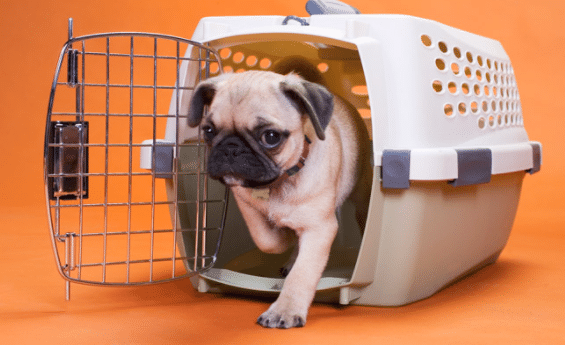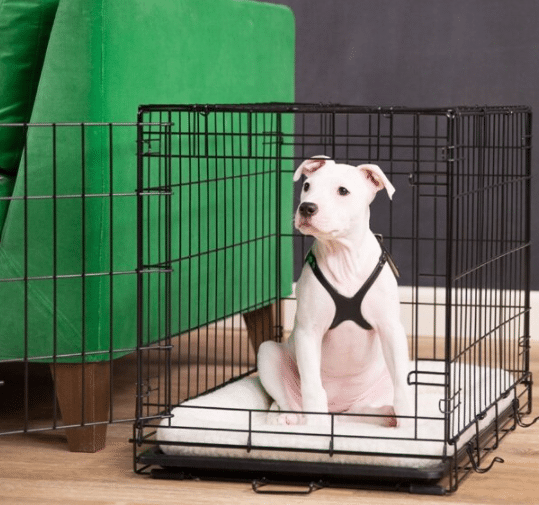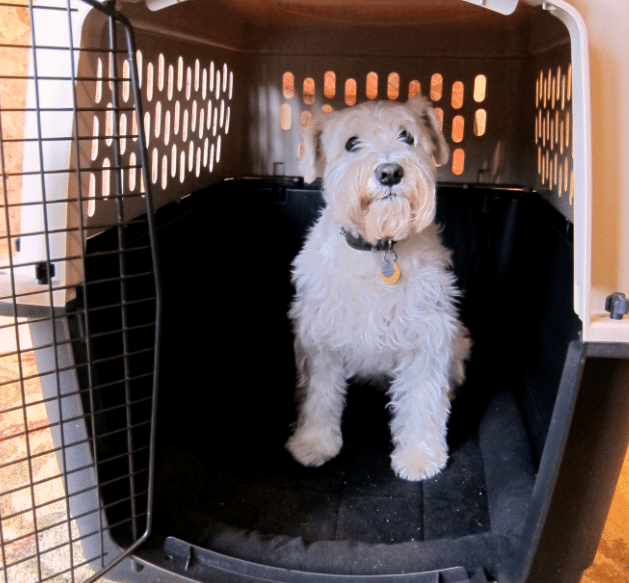Let’s be honest; it takes a great amount of time only to get your dog to enter the crate, let alone developing a habit out of it. To keep dogs from destroying the house and to provide them with a safe space of their own, dog parents purchase a suitable kennel or crate for them. Dogs are essentially denning animals, meaning that naturally and historically, dogs love being in small and covered spaces.
A puppy is comfortable in dens because it makes them feel safe and cozy. This may make you think that crate training is a walk in the park. But let me tell you, kennel training is not just about getting your dog in the crate. It’s about helping them develop a habit of being in the crate and enjoying the space. It’s about letting them know that the crate belongs to them and that they will be safe in there.
Even small mistakes during the process can make the dog feel unsafe and dislike the crate. This is why dog owners need to learn the right crate training process and practice it with their furry friends. And to help you with that, we’re here with our expertly written crate training tips that are easy to apply and highly effective. Let’s get started!
First Of All, Why Should You Crate Train Your Dog?

Before we get into the tips and methods, you should know why crate training is the right thing to do.
First and foremost, young puppies take time to learn the house rules, and getting them to enjoy being in a crate will keep them from creating a mess in the house by shredding your furniture and whatnot. Other than that, you should know that dogs are prone to separation anxiety, especially adult dogs.
They worry when their owners are not around or leave the house. A crate can come in handy at such times, as the dog can simply move into its safe space until you get back. Crate training will also develop your relationship with the dog. When the dog starts feeling comfortable in the space designated only for them, they start acknowledging their owner’s love and care for them.
With that being said, here are some tips for creating a safe space for dogs and making them feel comfortable and happy in it.
Furnish The Crate

Before you even get your dog to enter or see the kennel, make sure that you furnish it with comfortable bedding. Also, load it with your dog’s favorite toys. This will make the dog naturally want to visit the crate and enjoy the space over a period. However, make sure that you don’t put any small-sized toys that the dog can accidentally swallow and choke on. Instead, buy big-sized soft toys and chewing bones that your dog enjoys. Apart from that, make sure that the kennel has dog treats and water.
Prepare A Schedule

This is a good way to condition your dog in the most natural and healthy way possible. All you have to do is prepare a rough dog schedule for an entire day and follow it for a week or two. The schedule should include everything your dog does, such as potty break, meals and snack time, playtime, naps, etc. And in this schedule, incorporate fixed periods for your dog to stay in the crate. Every day, make sure that you get your dog in the crate for playing or napping. In the beginning, you can determine a shorter period. Then, gradually move to longer periods such as two or three hours at a time.
Place The Crate Around You

Where you position, the crate plays a huge role in establishing a sense of comfort for your dog. In the beginning, when your dog is new to the crate, it is best to place it somewhere around you so that your dog can see you and feel secure. For example, if you spend a lot of time in the kitchen, place it somewhere near the dining area, such that you are not too close to the crate but somehow visible. You can also place the crate in your bedroom during nap time. Later, when your dog starts getting accustomed, you may leave the crate in one fixed place, wherever the dog feels most comfortable.
Lots Of Treats

Treating your dog after they execute your desired behavior is a classic dog parent move that works better than anything else. In the beginning, you can simply train your dog to enter the crate a couple of times and toss a treat each time. Next, you can train them to stay inside the crate for a short duration, starting from 5 to 10 mins and gradually increasing the time. Make sure to treat them well each time. After you successfully train them for short periods, aim for longer ones, such as an hour or so, and keep extending the time slowly. This will help the dog develop a habit of staying in the crate.
CONCLUSION
All in all, it is fair to say that crate training is a bit of a challenge, but when you take the right steps at the right time, it is child’s play. But make sure that you don’t rush into the process, or your dog may develop anxiety, which will hamper your relationship.